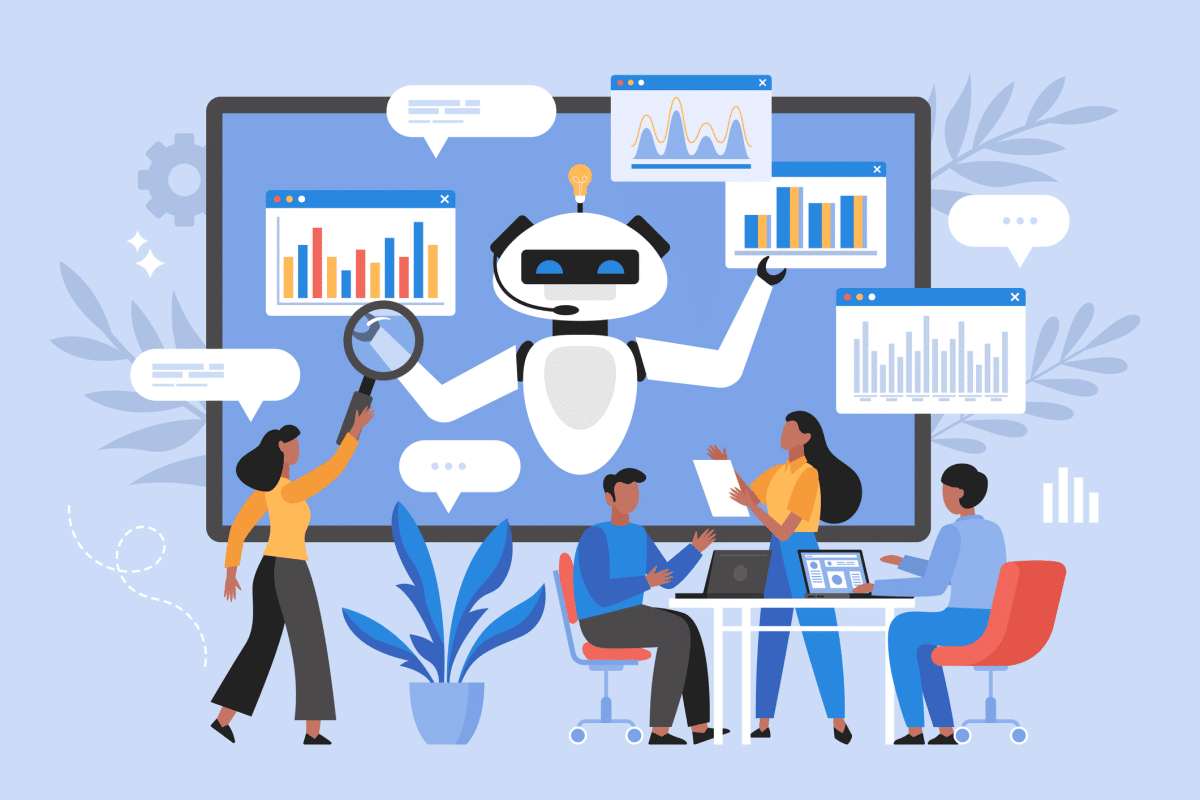From Generative to Embedded: How to Unlock Real AI Automation

The conversation around artificial intelligence has evolved dramatically since its new boom in late 2022. While much attention has focused on generative AI tools that create content, images, and code, forward-thinking organizations are now shifting their focus toward a more transformative goal: AI automation.
What’s the difference? Generative AI requires human operators to prompt, review, and implement its outputs. AI automation, on the other hand, embeds intelligence directly into business processes, enabling systems to independently perform complex tasks with minimal human intervention.
The business impact is huge and game-changing. While generative AI enhances human productivity, true AI automation fundamentally transforms how work happens —reducing costs, eliminating bottlenecks, and creating new operational capabilities that weren’t previously possible. That is, when implemented effectively.
What is AI Automation?
AI automation goes beyond simply using AI tools to assist human workers. It involves intelligent systems that can independently execute complex workflows with minimal human intervention. Unlike basic automation that follows rigid rules, AI-powered systems can learn from data, adapt to changing conditions, and make decisions within parameters —functioning as true digital workers rather than mere tools.
The most advanced implementations create end-to-end automated processes where AI-powered automation handles everything from data intake and processing to decision-making and execution, with humans providing oversight rather than direct operation. This represents a fundamental shift from AI as an assistant to AI as an autonomous business capability.
Organizations typically evolve through distinct stages on the path to full AI automation:
Stage 1: Individual AI Tools
Employees use standalone applications like ChatGPT or Midjourney to assist with specific tasks. This creates pockets of productivity but remains disconnected from core business systems.
Stage 2: Departmental AI Solutions
Teams implement dedicated AI solutions for departmental functions—from marketing content generation to sales intelligence. These tools connect to some business data but still require significant human orchestration.
Stage 3: Embedded AI Automation
Intelligence is integrated directly into operational workflows. Systems can now independently process information, make decisions, and take actions based on established parameters with minimal human intervention.
Stage 4: Enterprise-wide AI Transformation
Intelligent automation extends across organizational boundaries, creating seamless, end-to-end processes that continuously improve through machine learning.
The value increases dramatically across this progression. While a sales rep using ChatGPT to draft emails might save minutes, a fully automated system that analyzes conversations, updates records, schedules follow-ups, and generates communications without human intervention can transform entire business processes —reducing days to minutes while improving accuracy and consistency.
With a clear understanding of what AI automation entails, let’s explore how different industries can leverage these capabilities to address their specific challenges.
How to Use AI Automation for Your Industry
While AI automation principles apply broadly, implementation priorities vary significantly by industry, with each sector having unique high-value opportunities:
Financial Services:
- Automate loan processing and underwriting
- Streamline regulatory compliance reporting
- Enhance fraud detection and prevention
- Transform customer onboarding experiences
Healthcare:
- Optimize appointment scheduling and reminders
- Automate insurance verification and billing
- Streamline clinical documentation
- Improve patient engagement and follow-up processes
Manufacturing:
- Deploy autonomous systems for quality control
- Implement predictive maintenance to reduce downtime
- Optimize inventory management and logistics
- Enhance production planning and scheduling
Retail:
- Transform inventory forecasting and management
- Personalize marketing and customer communications
- Streamline returns and customer service processes
- Optimize pricing and promotion strategies
Professional Services:
- Automate document review and generation
- Transform research and due diligence processes
- Streamline time tracking and project management
- Enhance client communication and engagement
The key is identifying high-value processes specific to your industry where automation can deliver meaningful business impact. These implementations often combine conversational AI solutions with back-end cognitive automation to create seamless experiences for both customers and employees. Once you’ve identified promising use cases, how do you actually build these solutions?
Building Effective Embedded AI Solutions
Creating successful AI automation requires a systematic approach focused on process understanding before technology implementation:
Process Identification and Analysis
Start by mapping current workflows to identify high-value automation opportunities. Look for processes that are:
- Repetitive and rule-based
- Time-consuming for skilled employees
- Subject to human error or inconsistency
- High-volume with predictable inputs and outputs
Data Integration Requirements
AI-powered automation depends on access to relevant, quality data. Assess what information systems need to access, where it currently resides, and how to create secure integration points.
Automation Design Principles
Effective AI transformation solutions balance automation with appropriate human oversight:
- Define clear boundaries for autonomous decision-making
- Establish exception handling procedures
- Create transparency into automated processes
- Build feedback loops for continuous improvement
Implementation Approach
Most organizations succeed by:
- Starting with high-value, well-defined processes
- Creating quick wins that demonstrate ROI
- Focusing on integration with existing systems
- Building internal capabilities alongside implementation
This methodical approach ensures your automation initiatives deliver measurable value while building organizational capability for broader transformation.
From Possibility to Reality
The promise of AI automation is now achievable for organizations willing to move beyond the hype and focus on practical implementation. By thoughtfully embedding AI into core business processes, companies can create truly autonomous systems that transform operational performance.
Start your AI journey with the Faye Quickstart Workshop – a focused program designed to help you identify high-value automation opportunities and develop a practical implementation roadmap.
The future belongs to organizations that move beyond using AI tools to embedding AI capabilities directly into their core business operations. The time to start that journey is now.


